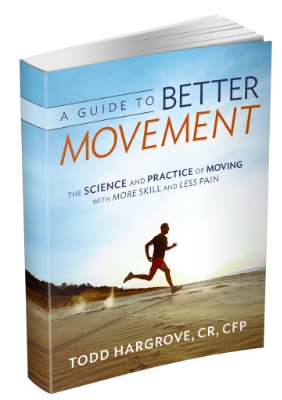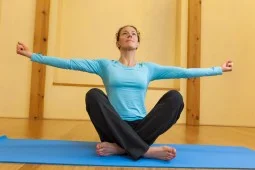My Book is Done!
I am very, very, VERY excited to announce that my book is now done and available for purchase! It's called A Guide to Better Movement: The Science and Practice of Moving with More Skill and Less Pain.
Click here to purchase on Amazon.
I am extremely happy with the book! It is basically a summary and synthesis of everything practical I have learned about pain and movement since I began studying it more than ten years ago. Here is some basic information about the book.
Who is it for?
The book is a resource for movement professionals, athletes, chronic pain sufferers, and anyone else who wants to move better and feel better.
It is written with enough scientific detail to appeal to people in the business of improving movement, like physical therapists, massage therapists, chiropractors, personal trainers, or instructors in yoga, pilates or martial arts. At the same time, it is written so a person with only limited background in the subject matter can understand it.
What subjects are covered?
The book offers a clear and practical look at emerging science related to the brain’s role in movement and pain. It includes twenty five easy-to-follow, illustrated lessons on how to move with efficiency and comfort.
Here's a little more detail on the contents and organization. The first section covers:
Biomechanics: The meaning and relevance of concepts like stability, mobility, balance, posture, variability, etc.
Motor control: How we organize movement through sensation, perception, feedback, and motor commands.
Motor learning: The stages of learning, and the role of body maps, neuroplasticity, and attention.
Developmental movements: How infants create the building blocks and adaptability for quality movement through playful exploration in developmental positions.
Pain science: Using the body maps and neuromatrix as a framework to understand the connection between pain, tissue damage, perception and movement. Includes a detailed discussion of the physiology of nociception.
Central governors: How threat perception leads to protective mechanisms like fatigue, weakness, stiffness and altered coordination patterns.
Science related to mind-body practices: The link between movement, emotion, thinking, attention and well being.
This information is then boiled down into some practical principles for improving movement that apply in a broad set of contexts. Whether you do yoga, Pilates, physical therapy, or corrective exercise, this book can help you understand exactly why what you are doing works, and how to make things work better.
The book concludes with twenty-five movement lessons, based on the Feldenkrais Method, that represent one way to apply the principles. The lessons are illustrated, easy to follow, and an excellent way to explore and improve your movement on your own, without a coach, and with a minimum of equipment.
How does the book compare to the blog?
Like the blog, the focus of the book is on the nervous system — how it controls the way we move and feel. One major theme is that it has far more influence on strength, speed, flexibility, endurance, pain, and coordination than you might imagine.
Unlike the blog, the book provides an organized synthesis of many ideas which remain disconnected on the blog. Further, at least half of the book introduces completely original material, in particular 150 pages of movement lessons.
Why did you write it?
Thanks for asking! As most of you know, chronic pain and lack of healthy movement are huge problems in our culture. Unfortunately, there is a ton of confusion and misinformation in regard to these subjects, which leads to anxiety, confusion, and unnecessary waste of time and resources. This books represents my best effort to make a positive contribution in this area. It is what I wished people in pain and people who treat pain knew more about. Although this book will not offer any easy solutions or miracle cures, I hope it will provide many people with a big step forward in how they move and perceive their bodies.
Thank you very much to all my readers and friends for giving me the support, encouragement and information to make this possible.
You can read samples of the Introduction and various other chapters by clicking here to visit the page on Amazon.
Oh and click here for Amazon.co.uk.
__________________________________________________________________________________________


